The Monastery of Panagia Faneromeni (i.e. Revealed Holy Mary) or Virgin Mary of Gournia is located northwest of Pachia Ammos, 24km south of Agios Nikolaos. It is a male monastery built on a steep slope at an altitude of 540 meters with stunning sea views. The monastery church is built inside a cave. The church is two-aisled and is dedicated to the Virgin Mary and Zoodohos Pigi (i.e. Life-Giving Spring).
The monastery is one of the most famous in eastern Crete. On August 15, when it celebrates, pilgrims arrive from all over Crete. Indeed, some people arrive on foot so as to fulfill an oath.
The monastery is built on a steep slope, reminding of a fortress standing high above the sea. This position reflects the defensive nature of Faneromeni monastery against the frequent pirate raids on the coasts of Crete. The architecture is reminiscent of monasteries that were restored in the late 16th and 17th centuries.
According to a legend, once a shepherd lost his best ram every afternoon. One day he decided to follow the ram and saw him drinking water that flowed from the cave. The shepherd approached and the icon of the Virgin Mary was "revealed" to him. When he got the icon and moved it to his home, it disappeared and the shepherd found it in the cave, where he built the monastery. They say that the same icon, especially on the Assumption and the other Marian feasts, reappears and mysteriously disappears again.
The cave has been arranged to a chapel, whose walls are full of frescoes. The paintings, however, were blackened by fire that probably was caused by the Turks. The sanctuary connects to a second cavern, in which water flows and is used as holy water. It can be accessed via a staircase starting in the central courtyard. The buildings have been built so that their outer walls form a fortified wall on top of which there are loopholes and battlements. Inside the fortress-like complex, there was a bakery, warehouses, and monk cells. Above the main entrance, there was the “scalding hole”, a hole from which the monks poured their enemies with boiling oil or melted lead.
The monastery of Faneromeni was very rich and owned smaller monasteries, such as the monasteries of Exakousti, Karydiani and Armos. The wealth of the monastery was the cause of constant disputes between the monastery and the Turks of Ierapetra.
Apart from the legend, the monastery is historic, because it was used for protecting and strengthening the Cretan rebels, such as Francesco Tsantirakis or Papadakis, during the difficult years of Venetian and Turkish enslavement. The defensive character of the monastery is revealed by its strategic position and fortress-like architecture. Indeed, even today you’ll see bastions and battlements, like in most monasteries of the same period. Moreover, it is told that the first secret school in Crete operated here. Finally, Rodanthi was nurtured here, a woman that later was dressed as a man with the nickname Spanomanolis and was enlisted in the army of Captain Kazanis, from Marmaketo village, for fighting the Turks.
Timeline
- 961-1211: The monastery is built in the B Byzantine period.
- 1293: The Cretan rebels Alexis Kallergis, Melissinos, Kavasilas, and Chamoleos meet secretly in the monastery on Palm Sunday to decide the future of their movements against the Venetians.
- 1624: The monastery is restored










 Faneromeni Monastery near Gournia
Faneromeni Monastery near Gournia













































































